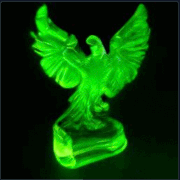|
Problem description: I'm building my own PC after many years of not doing that. Having assembled all the parts, checked, rechecked, and re-re-re-rechecked the connections, the computer simply won't turn on. When the power switch in back is flipped on and the power button pressed, the only thing I can see happening is the red LED next to "CPU" on the motherboard will briefly turn on, then off (Googling, it seems like that part is actually good, since if it stayed on it would indicate a problem). This only happens the first time the power button is pressed. Attempted fixes: I have removed the video card and had the same problem, so that's obviously not the culprit. I used a screwdriver to link the power switch on the motherboard directly with no results, so the power switch itself is not the problem. I also did the paperclip test with the isolated but plugged in power supply, and found that the fan would indeed start spinning when turned on (and that it would give power to an LED and case fan that was not attached to any other component but the power supply). I've tried booting the computer with the RAM and hard drive removed and disconnected (in all combinations). Removing and disconnecting these components does not change what happens: the computer fails to boot, the red LED next to "CPU" blinks once, then turns off, and nothing else appears to happen. The RAM is DDR4-2400, while the motherboard goes up to 2133, but from reading online this should just mean it uses the memory at lower than capacity, and shouldn't cause the problem I'm seeing. So, my hypothesis, which could be complete wrong, are: 1. The power supply has some sort of major problem preventing it from powering the motherboard and CPU properly (unlikely?) 2. The motherboard is broken in some major way (seems most likely at this point?) 3. The CPU did not get inserted properly (possible, but I was super careful here) The old-rear end computer I'm posting this on doesn't really have any components I can use, with the possible exception of the power supply. However, I wanted to get the advice of folks here first. I'm sort of at a loss of what to do next. Recent changes: Everything, obviously. It's all new parts. Operating system: e.g. Windows 10, 64-bit (though I haven't had a chance to format the SSD yet) System specs: Home-built PCPartPicker part list ----- CPU: Intel Core i5-6600 3.3GHz Quad-Core Processor CPU Cooler: Cooler Master Hyper 212 EVO 82.9 CFM Sleeve Bearing CPU Cooler Motherboard: MSI B150M BAZOOKA Micro ATX LGA1151 Motherboard Memory: G.Skill Ripjaws V Series 16GB (2 x 8GB) DDR4-2400 Memory Storage: Samsung 850 EVO-Series 500GB 2.5" Solid State Drive Video Card: MSI GeForce GTX 1070 8GB Video Card Case: Rosewill Challenger-U3 Mid Tower Case Power Supply: Corsair Builder 600W 80+ Bronze Certified ATX Power Supply ----- Location: USA I have Googled and read the FAQ: Yes
|
|
|
|

|
| # ? May 12, 2024 22:09 |
|
I'd disconnect all non-essential peripherals and also use onboard video (your video card is probably okay but it's possible more than one thing has an issue). Try just using one stick of RAM temporarily and trying both individually. If that doesn't work I'd take the motherboard out and put it on a nonconductive surface and use a key/paperclip to bridge the power pins on the motherboard (eliminates the case as being an issue). Uranium Phoenix posted:1. The power supply has some sort of major problem preventing it from powering the motherboard and CPU properly (unlikely?) All of those are possible. The PSU you're using isn't the greatest one for your machine but it should work. The old PSU in the old machine might not work depending on how old it is.
|
|
|





